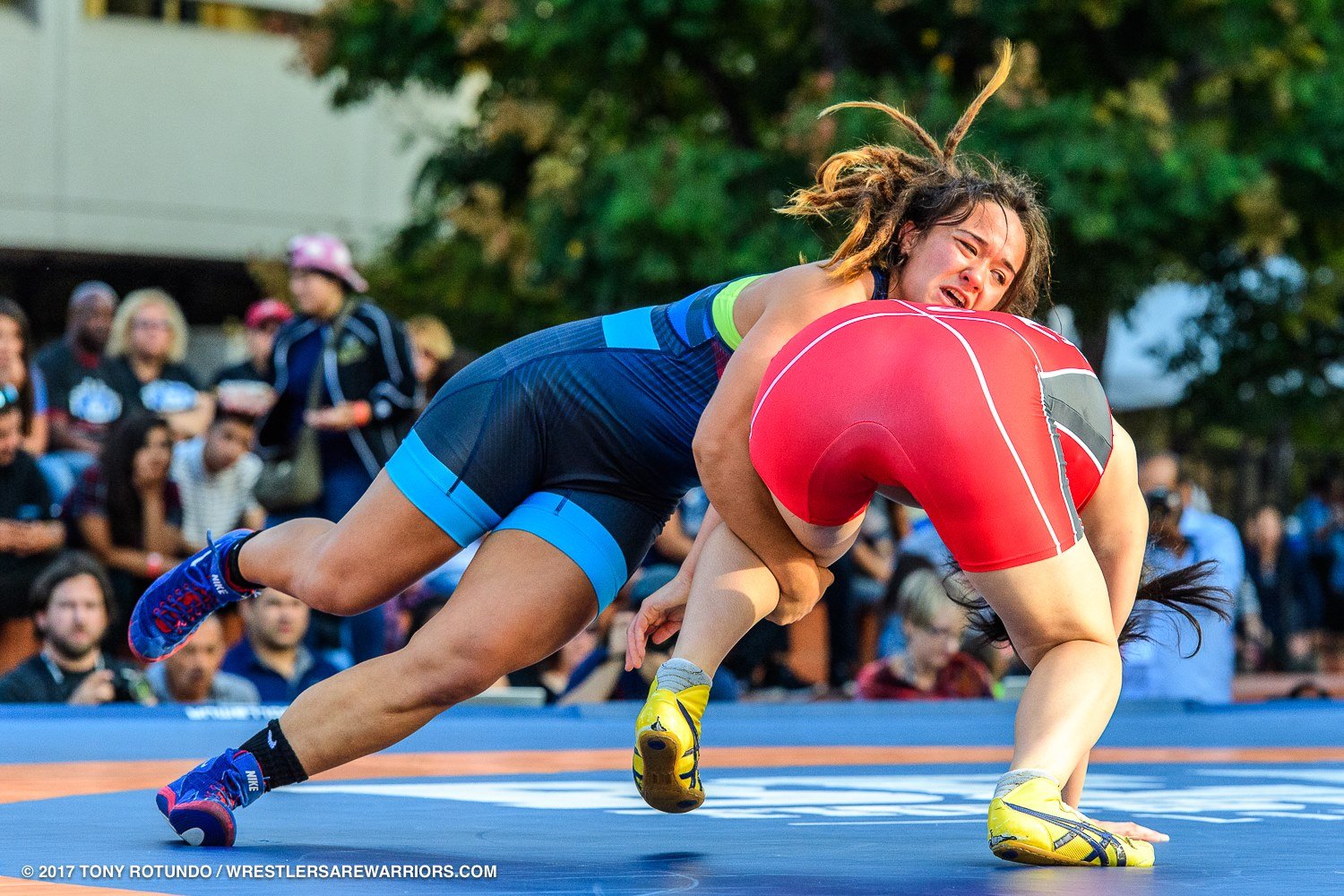Popular Topics
Should I Redshirt a College Year?
If you are approaching college or already in school, you may have heard from coaches or teammates about the option to redshirt a college year. But what does this mean for you as a student and as an athlete? How does it change the coarse of your college career? Through advice of Cliff Cushard, current head women's wrestling coach for Adrian College, this blog aims to give you the best tools to make an educated decision.
Lee Allen: Brain Neuroplasticity and Athletes
There have been major breakthroughs in the knowledge of how the brain works and our ability to study that process. For years philosophers, psychologists and the medical community believed that the body and its brain functioned like a machine. With the advancement of the computer many said “that is it, that is how the brain works!”
Monique Cabrera: Coaching and Giving Back to the Sport
For the past decade, I have been coaching boys and girls high school wrestling. It has been easier enrolling girls to wrestle than boys because I myself am a woman, and wrestled for the high school where I am currently coaching. Feedback from the athletes has been vital in order to encourage boys and girls to wrestle for the first time. It helps me understand how I can best support their goals and keep them coming back to the mat. Typically, I ask a new athlete why they want to join the sport. There are various reasons to why a young teen wants to join wrestling: getting into shape, being more confident, but my favorite is to be a part of a family. Over the last five years I have reiterated to high school athletes that wrestling isn't just a team, but a family and a culture to help shape and support becoming a better individual all around.
Preparing for Nationals
Preparing for a national tournament takes focus, and if you have more than one major tournament each year, you will have to have a good training plan. A training plan is comprised of phases that take you through increases and decreases in volume and intensity to help an athlete peak their conditioning. Each phase below is about two weeks, but allows you to customize the time.
Tournament Analysis: Girls Folkstyle Nationals
Attending the US Marine Corps Folkstyle Nationals in Oklahoma City was the first time in quite a while I was able to watch a national high school wrestling event. It was a great opportunity to get the know the wrestlers, have them get to know me, and ask what kinds of content they would like to see on LuchaFIT. After all, this website is all about creating fun and valuable content for the wrestlers, coaches, and their supporters! As with most national tournaments, I saw a lot of excitement, a lot of heartbreak, and a lot of desire to become better wrestlers. Here are a few key pointers I saw that those attending (and even those wrestlers not in attendance) could learn from.
How to Improve the Speed of Your Takedown
Our wrestling technique will take us far when we are working expanding our arsenal. But what about when we need to simplify our steps and create the most speed and efficiency with our movements? Surprisingly enough, in order to go fast, it means you need to start slow. By simplifying where your hands and feet need to go, you are putting yourself in the best possible position to quickly execute.
How to Choose Where to Wrestle in College
Mallory Velte started her wrestling journey in California. Despite first being told she could not join the team, she has pushed past obstacles to become a 3x college national champion, a junior and senior world team member, and one of the top wrestlers in the country. Read about her decision making for wrestling in college, and how the lessons she learned can help make your search more simple.
How to Break Down Wrestling Technique
We all want to learn technique and do it fast. I often have to tell athletes to slow it down so I can help them work on very specific areas. When you are challenged by technique, you need to break it up into its equal parts. Breaking down technique requires a major slow down and simplification of an area.
Kelsey Campbell: The Injuries Have Made Me Stronger Part 2
In 2012, shortly after qualifying for my first Olympic team, I began to feel a pop in my collar bone area while wrestling. Training at that point was specific and tailored to the olympic team. I was constantly aware of this injury, but didn't have the luxury of taking time to address the problem. It eventually went from discomfort to sharp pain. I would drill with someone much lighter than me, and just grabbing my normal standing single, I would literally see red. It wasn’t really a time to panic and true to my nature, I really didn’t discuss it outside of Terry Steiner, Kim Martori of Sunkist, and my physical trainers at the Training Center.
Olympian Kelsey Campbell: Be Resilient in the Face of Injuries Part 1
Kelsey Campbell has been a pillar in the sport of women's wrestling. From famously beginning her wrestling career late in high school, becoming ASU's first female wrestler ever, and making the 2012 Olympic team in historic fashion, Kelsey has had a long and full career. But it hasn't been without setbacks. She has continued to find a way to make it look easy to someone on the outside, but is able to reveal the hard work and resiliency that is the backbone of her career. Kelsey brings us up close and personal with her injuries in sport and how they have made her tougher.
Advocating for Yourself in Practices
When it comes to fully taking advantage of your training, there can be different scenarios. Sometimes we are new to sport and don't have the tools yet to know how to have our needs met. Sometimes we are the only girl on our wrestling team and may feel intimidated by an all male room. And other times we realize advocating for ourselves is a skill that can take a long time to master. Here are some great tips so you can start practicing now.
Must Have Exercises for Wrestlers
As wrestlers, there's a few basic motions that translate into the variations of movement needed for wrestling technique. Focusing on a few basic body weight exercises can make a huge difference in your wrestling game. Not having any gym equipment isn't any excuse! Use your body, get outside, and sharpen up your skills off the mat.
3 Steps to Advance Your Rope Climb
Rope climbs are an awesome way for wrestlers to build their core, arm strength, and stamina. Its the kind of exercise that helps you get gritty... you can't let go and you have to fight to the top! It can be very representative of a wrestling match, which makes it so applicable! Once you can advance to climbing the rope without the assistance of your legs, you are reaching a new level of strength. Here are your steps to advancing your rope climb.
Othella Feroleto: How to Use Protein Supplements as a Female Wrestler
Othella Feroleto is a former athlete for the US Army World Class Athlete Program, has an extensive wrestling resume, and is now pursuing her masters degree in human-nutrition and dietetics. We are thrilled to have nutrition advice from someone who has wrestled and traveled the world. That kind of experience helps you advise younger wrestlers who are looking to reach a new level of training.
Why Women Should Get Off the Cardio Equipment and Hit the Weights
I can't begin to tell you how many women and girls have shared with me their concern for getting "bulky." In order to avoid this, they focus hours on the elliptical, running on treadmills, and climbing the stair master. Afterwards, they may walk across the gym and pick up 5, 10, or 15 pound dumbbells to do a couple sets or curls or presses. I rarely see women curl or press dumbbells that are so heavy they can barely finish their set of 8-10 repetitions. Why is this?
Read THIS to Prevent Knee Injuries
As wrestlers, we get into extreme positions. If you have knee instability, you are putting yourself at risk for tweaks, sprains, or the worst: ACL tears. The first gif shows a position I often see female wrestlers in. The knees rock in, out, or a combination of the two. This indicates that the muscles of the leg and surrounding tendons (connects muscle to bone) and ligaments (connects bone to bone) which support the knee joint are weak and compromised. If this improper knee position continues while doing jumps, weight lifting, stance drills and wrestling, you can often expect injuries.
The Problem with Letting Wins Define Your Self Worth
Competition naturally brings on a count of wins versus losses, who beat who, and how many teams were made when you competed at an elite level. None of this is inherently bad, until we start letting those elements define our self worth. We have all heard stories from past athletes, no matter what level they competed at, of the lessons from sport which have carried over into their careers and personal lives. This happens for a reason, and they share these stories because they are proud of the characteristics sport has given them. They discover that the wins and losses have faded from memory, and they have reaped the benefits of resiliency and determination. It helped them become successful people in life. The athletes who stepped away from sport with a sour taste in their mouth often leave because they focused too much on the wins or losses. They never saw the lessons sport had to give, and often have a harder time adapting to what life throws at them.
5 Items You Shouldn't Forget for Competition
For every sport competition, we have our typical packing list of must haves: uniform, food, water, lucky socks. But the more we compete, the more we find ourselves in situations where we didn't have what we needed. And even though we try and buffer for most situations, not everyone knows what to pack just in case. Here are the 5 items you should never forget to bring with you to a competition.
What you Need to Move Past a Tough Training Session
Giving yourself the opportunity to be okay with the ups and downs of training is important. No one has consistently perfect training sessions, no matter how positive they seem or how awesome their workouts look on social media. Here are my tips so you don't get hung up on a tough training session:
Improve your Wrestling Game this Season
As a former athlete transitioning into coaching, I have had the opportunity to work with some of the best coaches and athletes in the country. This summer I had the opportunity to travel around the country helping youth athletes improve in the off season. From clinics, to the Freestyle National tournament, to cadet and junior world team camp I have watched a variety of wrestling. As the new season approaches many athletes have asked what they need to do to have a successful season. After evaluating some of our nation’s best youth athletes these are my recommendations for the upcoming season.


























